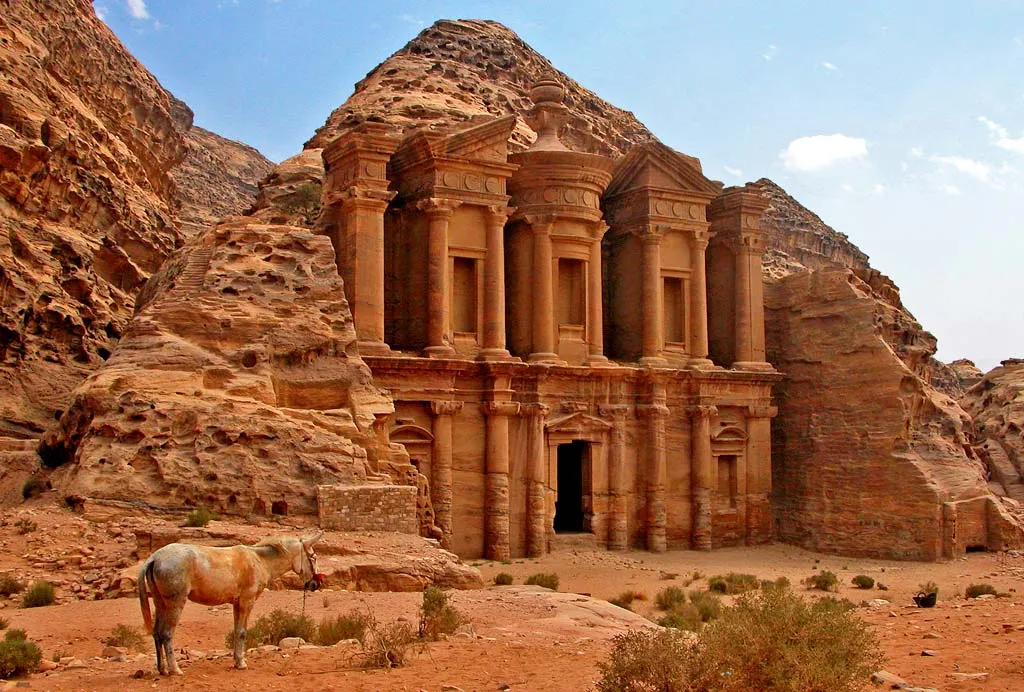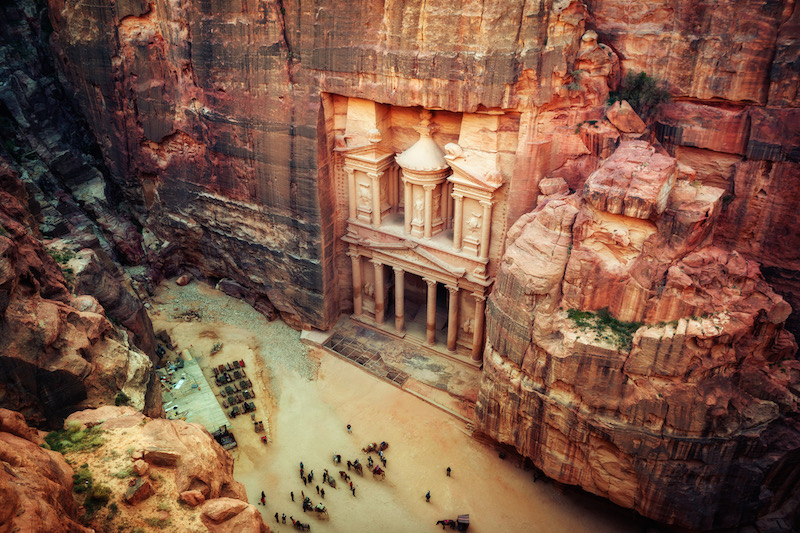Petra, the “rose-red city” of the ancient Nabataean civilization, is located in southern Jordan and east of Wadi Araba, part of the Great Rift Valley, whose bird flight is about 133 km from the shores of the Gulf of Aqaba.
The 2,200-year-old ancient city, where theaters, temples, houses and royal tombs were carved into the sandstone cliffs with an aesthetic blending Eastern and Hellenistic architecture, is one of the most important legacies of not only Jordan but also the world. The spaces carved into the rocks, each a masterpiece of art, are admirable.
The Greek word “Petra” means big rock. The Nabataeans, known for their idolatry, built huge temples for their gods. They brought the values that were influenced by other cultures here. Blending ancient Greek, Romanian, Egyptian, and Mesopotamian styles, they created the magnificent city of Petra with a unique architecture.
The weakening Nabataean Kingdom was incorporated into the Roman Empire in 106 AD. Petra, which fell out of favor due to earthquakes and economic problems after 400 AD, was forgotten in time. It was a lost city known only to nomadic Arabs until it was rediscovered by the Swiss explorer Johann Burckhardt.
Hidden amidst the folds of magnificent hills, this unique area was unknown to Europeans until it was rediscovered in 1812 by Swiss explorer Johann Ludwig Burckhardt. After spending a few years learning Arabic and learning Islamic principles, Burckhardt converted to Islam in India and embarked on his journey under the auspices of the London-based “Association for the Promotion of the Discovery of the African Interior”.



The language they used and the information about the Nabataeans, who are the foundations of Arabic, can also be found in the Genesis section of the Old Testament. It is mentioned that the people called “Nebayot” in the Old Testament are the descendants of the eldest of the twelve sons of Ismail, the son of Prophet Abraham, and that these twelve tribes lived in the lands up to Egypt with their villages and camps.
One of the most breathtaking aspects of Petra is its colorful sandstone structure and wonderful architecture, celebrated almost 150 years ago with the memories of a few tourists. “The tone of the stone is bright and cheerful beyond my expectation,” the artist Edward Lear wrote in his notes as he toured in 1858. His assistant and cook, Giorgio Kokali, said, “Oh sir, we have entered the world of chocolate, ham, curry powder and salmon!” he expressed his delight.
Petra, once described as a “rose-red city” by a poet, is actually a misty pink color made up of lilac, gray and white, broken by swirls of yellow. No color stays the same because the colors change constantly according to the time of day and the quality of the light. The rock is accentuated by bright green and pink oleander or cactus flower orange.
It was included in the UNESCO World Heritage list in 1985. Petra, chosen as one of the New Seven Wonders of the World, is one of the most recognizable symbols of Jordan.
